Welcome to Hermit Crab Pool Boy Training 101! We hope the following information will cover hermit crab water pools from a-z. If we didn’t cover something here please feel free to comment or contact us.
Let’s dive right in, the water is fine!
Your tank should have two types of water bowls or pools: ocean water made from marine-grade salt and freshwater. Tap water contains beneficial minerals and metals so we discourage the use of distilled or otherwise purified water. Tap water must be treated with a product like Seachem Prime to make it safe for use. Prime also binds ammonia. In our testing, ammonia levels in semi-permanent pools never reached a dangerous level. As there is no research regarding the effects of ammonia on land hermit crabs we can only observe the same guidelines in place for fish. Your water conditioner does not have to remove ammonia but it must remove chlorine AND chloramines. Seachem Prime is not available everywhere but there are several other suitable water treatments on the market. Do NOT purchases a water treatment that contains additives that create/simulate stress coat in fish.


Choose a pool size that will accommodate your largest crab and allow it to submerge. A large surface area of water will create more humidity. Adding bubblers/air stones to the water pools will boost humidity but you do have to monitor for excessive splashing causing over saturation of the surrounding substrate.
Water pools can be standing water, bubbling water or semi-permanent pools with filtration. The size of your tank will dictate the size of your pools. If using disposable Tupperware type bowls as pools, double them to catch leaks as well as to simplify the removal of the pools for cleaning. The second bowl is left behind and the substrate under and around remains undisturbed. Food grade plastic, glass, acrylic and aquarium resin are all safe materials for water pools.

Water pools may be placed next to your heat pad or beneath your overhead light to produce additional humidity if needed. When placing the pools near the heat pad, check the water temperature periodically. While we don’t know the preferred water temperature for swimming we do know that 78F is a good median temperature for hatching zoea. You wouldn’t want 90F water in your pools. This generally is not an issue but for the sake of completeness it’s worth mentioning.
When placing the pools be sure to consider how much work it will take to access them for regular maintenance. Also consider possible escape routes that are created by power cords and air tubes. The pools need to be on a stable base so they will not tip and flood the tank if a crab digs under the containers. You can use a flat stone or a piece of lexan/acrylic to provide a base for both pools. Pools with a wide base will be less likely to tip. Placing the pools well above the substrate line will reduce the amount of moss and other debris that is carried into the pools by your hermit crabs.
The pools will need some form of ladder to ensure no crab will get stranded in the pool. You can use aquarium silicone to adhere all manner of rock, glass, shells to the walls of the pool to make them climbable. Do not use silicone with mold/mildew inhibitors. GE Silicone is widely used. Plastic aquarium safe plants can be used. A very popular trick is the use of plastic craft mesh to make a ramp. By warming the mesh with a hair dryer you can bend and shape it.

In order to use filters or bubblers you will need a small aquarium pump. The common setup is to use a pump that sits outside of the crabitat with a single air hose entering the tank. A splitter will allow you to aerate both pools from one airline. A line valve will help control the flow of air, allowing you to turn it down to minimize splashing.
Some filters work with submerged pumps. In this setup you will want to place cord guards over the power cord to prevent a hermit crab from pinching the wire.
Standing water pools should be changed every 2-3 days to maintain freshness. Dump all water, clean the container well and refill with safe water.
Bubbler water pools should be changed every 3-5 days to maintain freshness. Dump all water, clean the container well and refill with safe water.
Filtered pools should be maintained as you would a fish tank. Perform partial water changes or top offs using safe water. Change your filter as needed. Use a sea hydrometer to measure the specific gravity of your ocean water pool after top off. Strengthen or dilute as needed. As a precaution, treat your pools with Prime each time you add water. If algae gets out of control or your water becomes cloudy or contaminated you should empty the pool completely and clean thoroughly.
Fresh and salt water can be made in one gallon jugs and stored for use. Shake well each use.
You can’t harm your crabs if you use too much Prime. It requires 2 drops for an entire gallon. If you are making smaller quantities, a single drop is safe.
Nearly all marine-grade salt is mixed 1/2 cup salt per gallon of water.
Shop for Hermit Crab Pool Items on Amazon
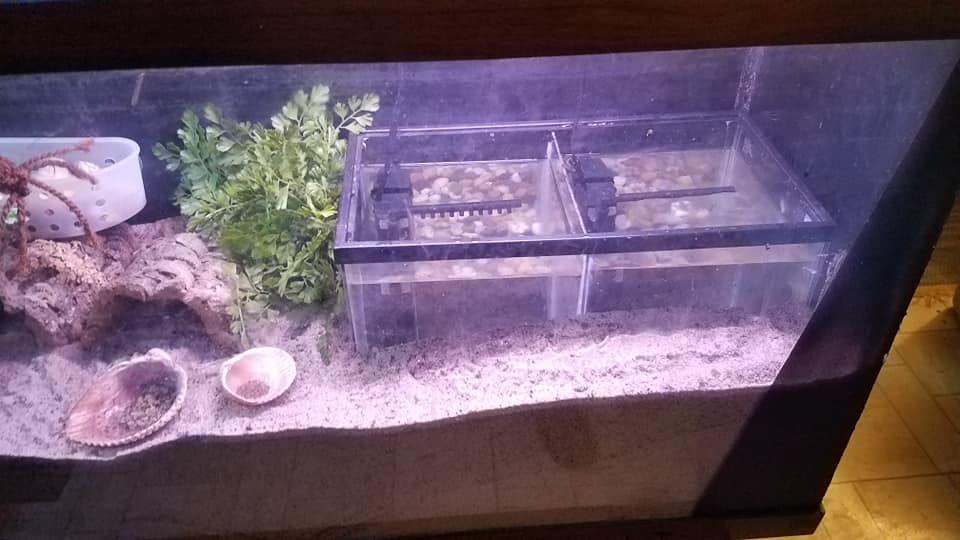
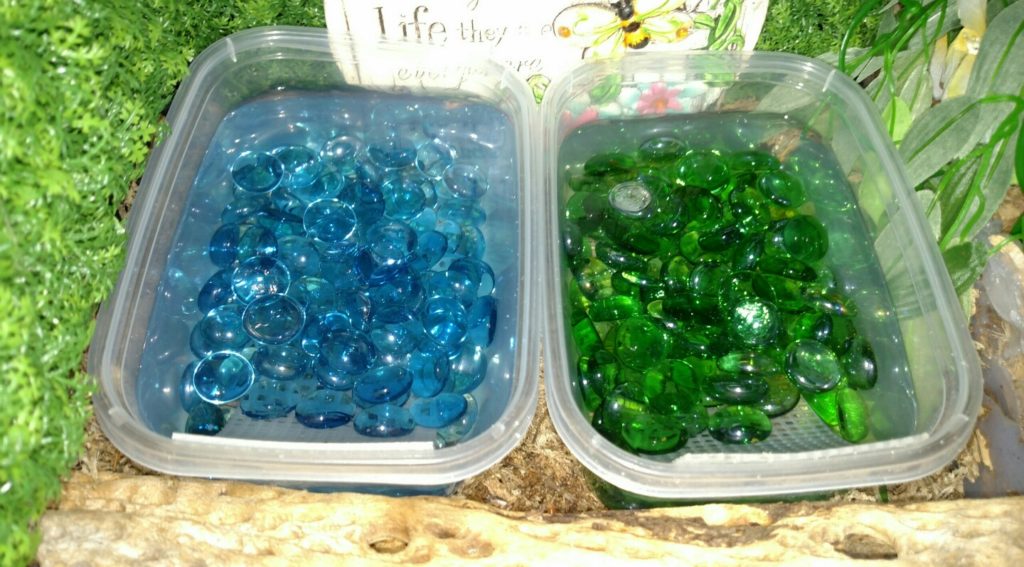

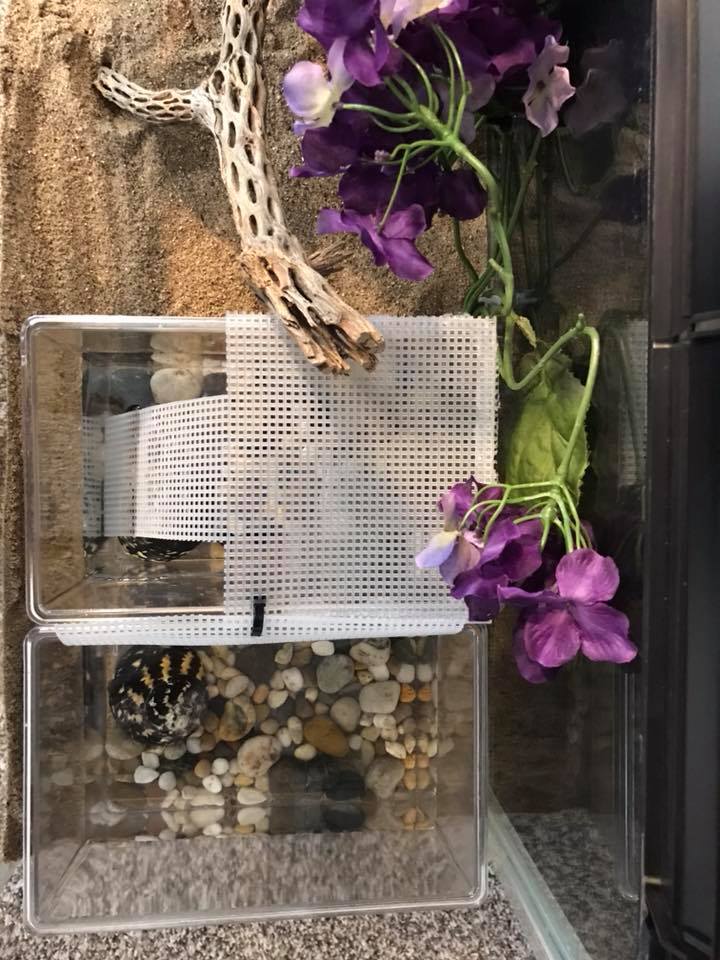

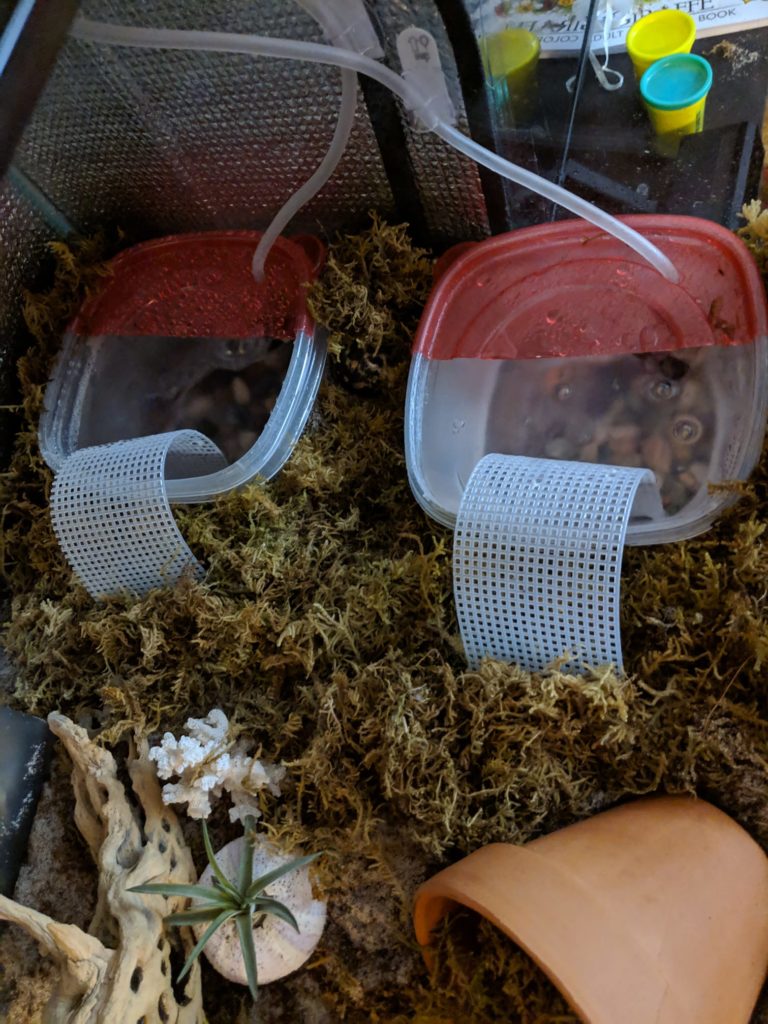
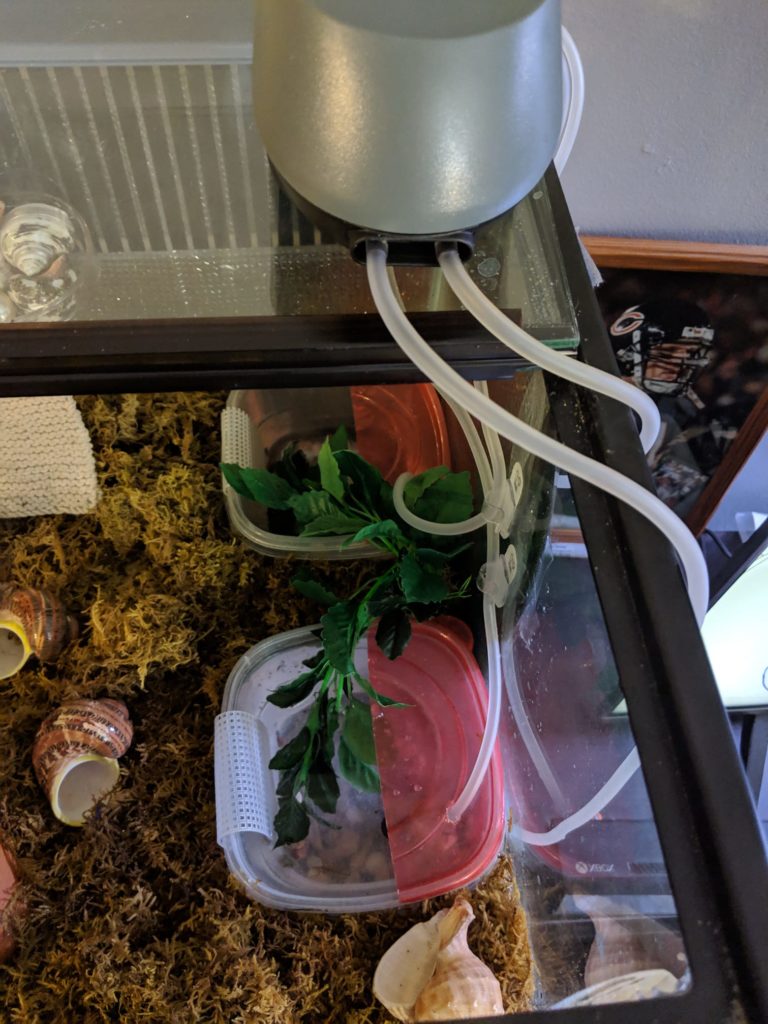
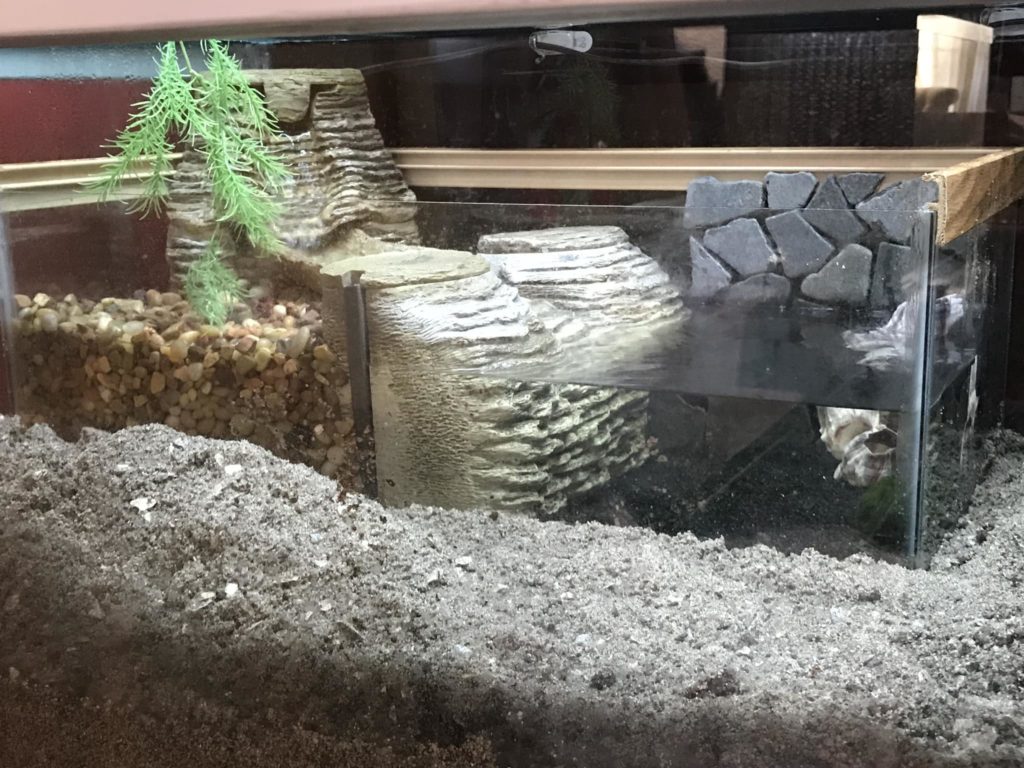

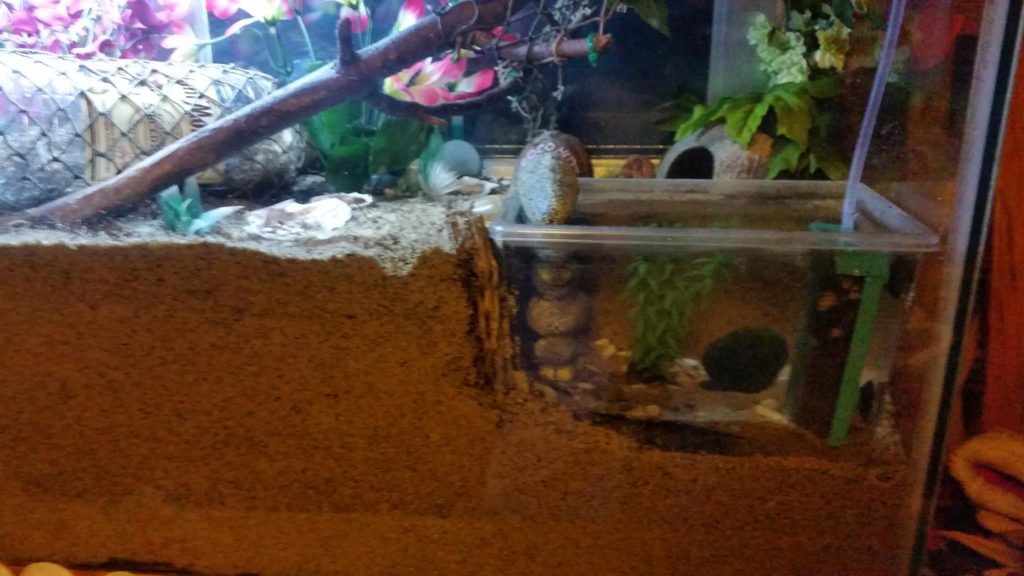

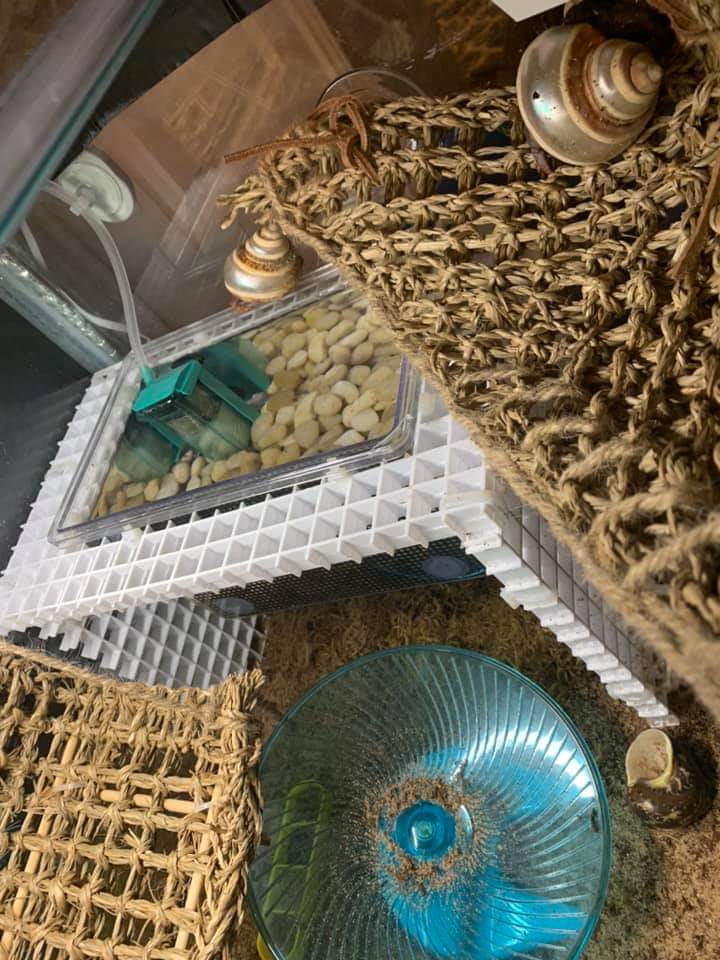
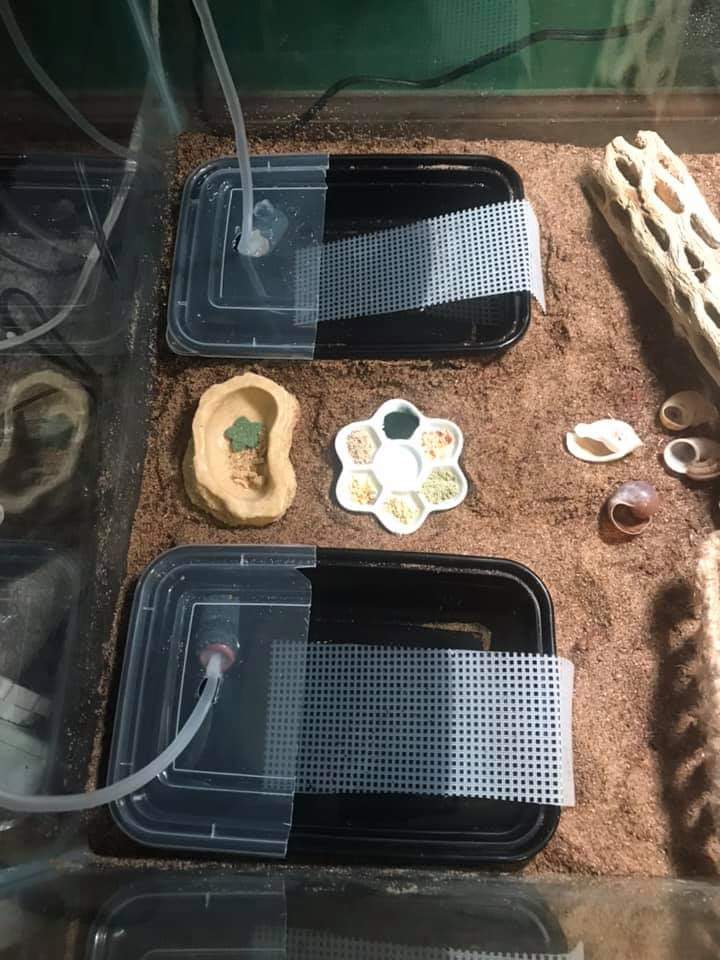
A Bio Active Crabitat – Lecture by Courtney Karr

